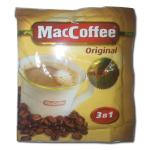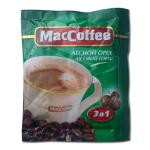
Other names for the additive (synonyms)
General Information
Polyphosphates (food additive E452) are polymers of phosphoric acid used in the food industry as catalysts, emulsifiers, stabilizers, or moisture-retaining agents.
Polyphosphates were first discovered in the 19th century in bacterial cells. In 1890, German biochemist L. Liebermann identified polyphosphates in yeast cells. Research on polyphosphates peaked in the late 1940s and early 1950s, focusing on their functions, structure, and biochemical transformations.
Subsequent studies have shown that high-molecular-weight polyphosphates serve as a large phosphate reserve in the human body. In living organisms, polyphosphates exist as salts of various metal ions (Ca2+, Mg2+, K+, etc.), acting as ion-exchange reserves for these elements.
Today, food-grade polyphosphates are produced by condensing orthophosphoric acid at high temperatures or by polymerizing phosphorus compounds followed by neutralization with sodium, calcium, potassium, or ammonium salts.
Several types of polyphosphates are used in food production:
- E452(i) — sodium polyphosphate (NaPO3)n
- E452(ii) — potassium polyphosphate K(n+2)O(PO3)n
- E452(iii) — calcium-sodium polyphosphate (Ca,Na)(PO3)n
- E452(iv) — calcium polyphosphate CanPnO(3n+1)
- E452(v) — ammonium polyphosphate (NH4PO3)n
- E452(vi) — sodium-potassium hexametaphosphate (Na,K)n[(PO3)n] (n ≈ 6)
Effects on the Body
Benefits of additive E452
Polyphosphates play an essential role in cellular bioenergetics. They participate in blood coagulation, have the ability to form complexes with calcium ions, and contribute to the regulation of ion balance within cells.
Risks of additive E452
At levels used in food production, polyphosphates are considered to have low toxicity. EFSA studies confirm that their use is safe when the Acceptable Daily Intake (ADI) is respected.
The main concern with excessive consumption of polyphosphates is the potential disruption of mineral metabolism. An excess intake of phosphorus ions can lead to calcium depletion from bones, negatively affecting bone and dental health. In sensitive individuals, digestive disorders (bloating, diarrhea) may occur.
Several studies indicate that chronic overconsumption of phosphate additives may lead to:
- Hyperphosphatemia (elevated phosphate levels in the blood)
- Vascular and arterial calcification
- Increased risk of cardiovascular diseases
- Increased mortality (even among healthy individuals)
- Disruption of phosphorus-calcium metabolism
- Increased strain on kidneys
- Joint diseases (such as pyrophosphate arthropathy)
- Osteoporosis due to calcium-phosphorus imbalance
- Elevated LDL cholesterol ("bad cholesterol")
- Poor calcium absorption and deposition in kidneys
In 2019, the EFSA Panel on Food Additives reassessed the safety of phosphates, including polyphosphates (E452), and set the ADI at 40 mg/kg body weight (as phosphorus). The Panel expressed concern about potential exceedance in children and recommended reviewing permitted levels in products commonly consumed by children. Control of phosphorus intake is also advised for individuals with kidney disease.
Uses
In the food industry, additive E452 is used as a catalyst, emulsifier, stabilizer, and moisture-retaining agent. Polyphosphates bind calcium and magnesium ions, preventing salt precipitation, which is especially important in the production of meat and fish products, processed cheese, and confectionery.
Due to their inhibitory properties, polyphosphates slow down oxidation reactions, extending product shelf life. They also improve product texture, preventing moisture loss and enhancing juiciness.
In other industries, polyphosphates are widely used as corrosion inhibitors, water softeners, components of detergents and washing powders, as well as in textile production for fiber degreasing.
Legal Status
Additive E452 is permitted for use in food products in most countries worldwide, including the European Union, the USA, and Ukraine.
In the EU, polyphosphates are regulated by Regulation (EC) No 1333/2008, which sets maximum permitted levels in various food categories. In the USA, polyphosphates are recognized as GRAS (Generally Recognized As Safe) for specific food applications.



